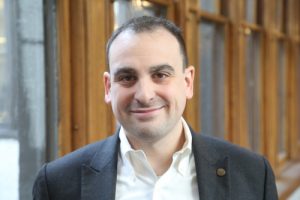‘Tis the season for a massive copyright opinion. In the run up to the new year, the Ninth Circuit issued its decision in the long-gestating Dr. Seuss Enterprises, L.P. v. ComicMix LLC case. Its clear-eyed analysis brilliantly ventilates the “fair use” defense, which has recently become one of the most misapplied (and thus popular among infringers) doctrines in all of copyright.
Dr. Seuss, while not a holder of an M.D., wrote and illustrated some of the most iconic stories of all time, each of which are dappled with his unique and fanciful language and imagery. One of the good Doctor’s best books, Oh, the Places You’ll Go!, is an evergreen work that has been widely popular for decades, and not just with those looking to give a thoughtful but whimsical graduation gift. It has repeatedly graced the The New York Times Best Seller list and, along with other Seuss works, made Seuss the number one book brand of 2017.
An obscure company named ComicMix thought they could cash in on the popularity of Seuss by creating a Seuss-y book that was not actually authored by him. To do so, ComicMix copied verbatim a number of original illustrations from Go! and other Seuss works, reproduced the structure and overall look and feel of the Go! story, and then sprinkled in some characters and references they copied from another work, Star Trek. The end result was Oh, the Places You’ll Boldly Go!, a book that the Ninth Circuit found to be no more than a “repackaging” and “copying” of Seuss’s work. As such, ComicMix’s attempt to target Seuss’s market and profit from this book was decidedly unfair.
This appears to be such a clear and obvious case of copying and infringement that you may wonder why the Ninth Circuit’s decision is so important. Chiefly, it is due the Circuit’s savage dismantling of ComicMix’s ultimately misguided Section 107, or “fair use,” defense. As we will discuss, this defense was credited by the District Court and has recently emerged as a massive area of confusion for the courts. The ComicMix decision greatly clarifies the application of the doctrine and will remove some of the uncertainty from the litigation process.
There is a four-part test that, while nonexclusive, is meant to guide the Section 107 analysis. When an infringer has copied an artist’s work without consent but then claims the copying was fair, the court, under 17 U.S.C. § 107, should look at (1) the purpose and character of the use, including whether such use is of a commercial nature or is for nonprofit educational purposes; (2) the nature of the copyrighted work; (3) the amount and substantiality of the portion used in relation to the copyrighted work as a whole; and (4) the effect of the use upon the potential market for or value of the copyrighted work.
The Ninth Circuit applied these factors to the ComicMix knockoff and easily found that Section 107 defense provided no safe harbor. Indeed, it concluded that not a single factor favored a finding of fair use and reversed the District Court’s finding to the contrary.
The Ninth Circuit begins its analysis by concluding that ComicMix made an “indisputably commercial use” of Go!, which cuts against “fair use.” While not dispositive, a copied work is less likely to be found protected by fair use when the copying was done to make money as opposed to a more altruistic reason. Then, the Ninth Circuit found that the infringing work was not educational or for purposes of critique or transformative given that it “merely use[d] what Dr. Seuss had already created[.]” And the Circuit found “completely unconvincing” ComicMix’s “post-hoc characterization of the work” as a transformative parody or commentary, which was helpful because it is quite common for infringers’ attorneys to simply fabricate fair use bases long after their clients committed the infringement.
ComicMix also argued that its addition of “extensive new content” to the Seuss material — which, ironically is also copied, from Star Trek — makes its use fair. But, as the Ninth Circuit notes, the addition of new content is “not a get-out-of-jail-free card” and instead impinges on an artist’s right to create derivative works. In the end, this factor heavily favored Seuss because ComicMix, in repackaging the work of Seuss, “merely recontextualiz[ed] the original expression by plucking the most visually arresting excerpt[s]” from his work. And that is simply not “transformative.” What is transformative and whether we should even be considering the question given that the word transformative does not appear in Section 107, will be more fully vetted in the coming paragraphs. In the end, the first factor was decided in Seuss’s favor.
The second factor looks at whether a work is functional or creative, with the latter being closer to the core of the type of creativity protected by the Copyright Act, and as a result less likely to be “fairly” used. The Ninth Circuit found Seuss’s work highly creative and decided this factor in plaintiff’s favor.
The third factor also favored Seuss. It examines the amount and substantiality of the copying at issue. The more copying, the less likely it is to be fair use. Here, large swaths of the “heart” and “highly expressive core” of Seuss’s work were copied. For example, as the Ninth Circuit held, ComicMx “replicated, as much and as closely as possible from Go!, the exact composition, the particular arrangements of visual components, and the swatches of well-known illustrations.” And the Circuit laughs off ComicMix’s claim that it “judiciously incorporated just enough of the original to be identifiable” as Seussian, finding it to be “fake math” and flatly contradicted by basically the entire record.
The final factor, which considers “the effect of the use upon the potential market for or value of the copyrighted work[,]” also heavily favored Seuss. The Ninth Circuit begins its analysis of this factor by concluding that the District Court erred in forcing Seuss to shoulder the burden of proof, which “led to a skewed analysis[.]” Noting it as one of the few absolutes in the fair use analysis, the Circuit established that an infringer bears the burden of proof on all factors. In addressing the substance, the Circuit chastens ComicMix for failing to address the fact that it “intentionally targeted and aimed to capitalize” on the same market as Seuss. It also concludes that allowing works like the ComicMix knockoff would curtail Seuss’s right to license others to create derivative works and finds that ComicMix’s argument as to this factor “falls flat.”
In the end, the Ninth Circuit found, with ease, that not a single one of the Section 107 factors militated in ComicMix’s favor. The fair use defense here appears so obviously frivolous that one wonders why ComicMix and its attorneys would even advance it in the first place. But, given the confusion regarding the application of the factors, and the widely disparate rulings on the issue, infringers’ counsel now raise the fair use defense in even the most blatant cases of infringement and in situations where it is wholly applicable.
And, well, the District Court here found the Section 107 defense applicable as a matter of law at the summary judgment stage despite the fact that, as the Ninth Circuit panel unanimously notes, “ComicMix created, without seeking permission or a license, a non-transformative commercial work that targets and usurps Go!’s potential market.”
Infringers’ counsel have fomented the confusion that led to this District Court and many others wrongly applying this defense primarily by exploiting the uncertainty around the definition of transformative in the Section 107 context. Courts have found all manner of things transformative and excused infringement as fair use on that basis, resulting in havoc and unceasing appellate practice. But, as the Ninth Circuit notes, “the term ‘transformative’ does not appear in § 107, yet it permeates copyright analysis” because the Supreme Court in Campbell v. Acuff-Rose Music, Inc. noted that courts should examine “whether and to what extent the new work is ‘transformative.’” As the Ninth Circuit later acknowledges, though, transforming a work by adding new content will often rub up against or outright infringe the artist’s statutorily prescribed exclusive right to create derivative works under Section 106. With this ruling, in the Ninth Circuit at least, future infringers will less likely be able to exploit the Section 107 defense by claiming their knockoffs to be”transformative.
Artists and copyright holders, as well as those looking to engage in actual fair use of other’s work, now have a lucid and thorough opinion to guide them and the courts in future disputes. The Ninth Circuit’s clear application of the Section 107 factors and its acknowledgement of the importance of the market harm factor and derivative right will be of assistance to all as copyright litigation continues apace in 2021.
 Scott Alan Burroughs, Esq. practices with Doniger / Burroughs, an art law firm based in Venice, California. He represents artists and content creators of all stripes and writes and speaks regularly on copyright issues. He can be reached at scott@copyrightLA.com, and you can follow his law firm on Instagram: @veniceartlaw.
Scott Alan Burroughs, Esq. practices with Doniger / Burroughs, an art law firm based in Venice, California. He represents artists and content creators of all stripes and writes and speaks regularly on copyright issues. He can be reached at scott@copyrightLA.com, and you can follow his law firm on Instagram: @veniceartlaw.
 Joe Patrice is a senior editor at Above the Law and co-host of Thinking Like A Lawyer. Feel free to email any tips, questions, or comments. Follow him on Twitter if you’re interested in law, politics, and a healthy dose of college sports news. Joe also serves as a Managing Director at RPN Executive Search.
Joe Patrice is a senior editor at Above the Law and co-host of Thinking Like A Lawyer. Feel free to email any tips, questions, or comments. Follow him on Twitter if you’re interested in law, politics, and a healthy dose of college sports news. Joe also serves as a Managing Director at RPN Executive Search.




 Kathryn Rubino is a Senior Editor at Above the Law, and host of
Kathryn Rubino is a Senior Editor at Above the Law, and host of 











 Scott Alan Burroughs, Esq. practices with
Scott Alan Burroughs, Esq. practices with